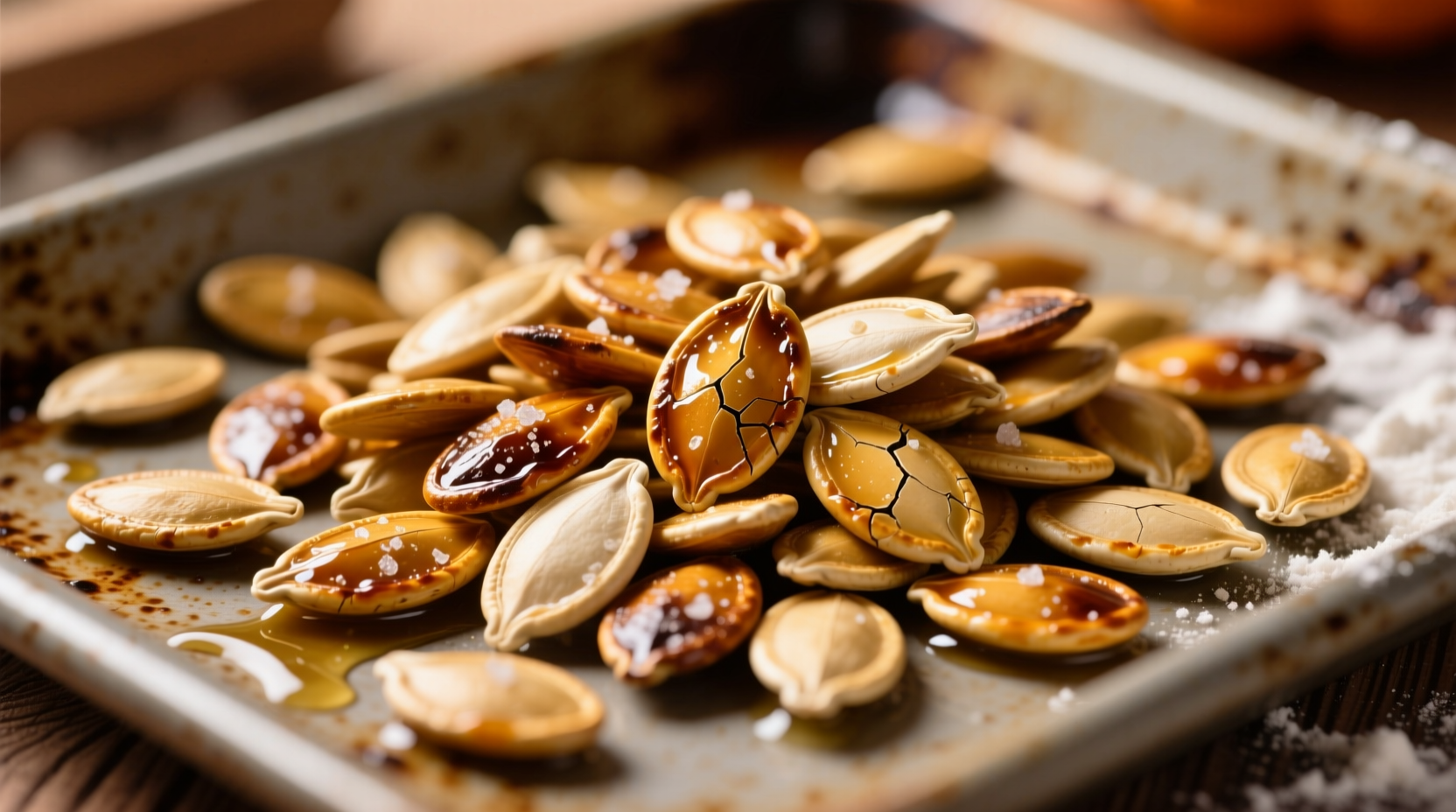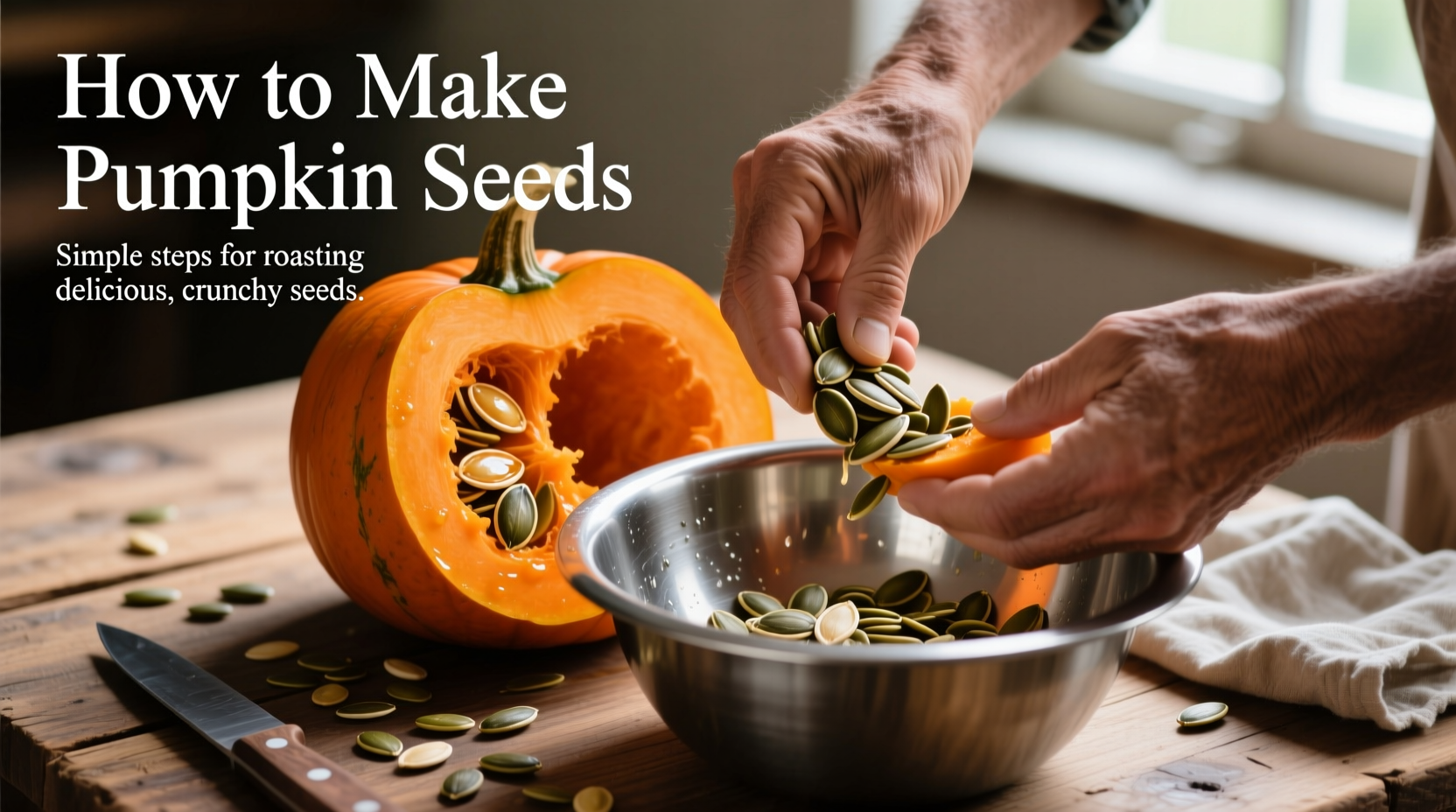Every autumn, millions of pumpkins get carved for Halloween, but most people throw away the nutrient-packed seeds inside. Making your own roasted pumpkin seeds is surprisingly simple, costs pennies compared to store-bought versions, and lets you customize flavors to your exact preference. Forget soggy, unevenly roasted seeds—our professional-tested method guarantees perfect results every time.
Why Homemade Pumpkin Seeds Outperform Store-Bought
Commercially produced pumpkin seeds often contain unnecessary additives, excessive salt, or stale oils that compromise both flavor and nutritional value. When you make pumpkin seeds at home, you control every element:
- Use fresh seeds directly from your pumpkin for maximum flavor
- Choose your preferred oil type (olive, avocado, or coconut)
- Adjust seasoning levels to your exact taste preferences
- Avoid preservatives and artificial flavors
- Enjoy higher nutrient retention from proper roasting techniques
Selecting the Right Pumpkin for Seed Harvesting
Not all pumpkins produce equally delicious seeds. While carving pumpkins work fine, sugar pumpkins (also called pie pumpkins) yield smaller, more tender seeds with superior flavor. According to the USDA Agricultural Research Service, sugar pumpkins contain approximately 20% more healthy fats in their seeds compared to standard carving varieties.
The Professional Method: 5 Steps to Perfect Roasted Pumpkin Seeds
Step 1: Extracting and Cleaning Seeds Properly
Many people make the critical mistake of rushing this step, which leads to uneven roasting and poor flavor absorption. Follow this professional technique:
- Use a large spoon to scoop seeds and pulp into a bowl
- Add cold water and use your hands to separate seeds from stringy pulp
- Rinse seeds thoroughly in a colander under cold running water
- Spread seeds on paper towels and pat completely dry (moisture is the enemy of crispiness)
Pro tip: Save the pulp! It contains valuable nutrients and can be used in smoothies or composted.
Step 2: The Critical Drying Process
Even seemingly dry seeds contain moisture that prevents proper crisping. Our tested method:
- Spread seeds in a single layer on baking paper
- Let air-dry at room temperature for 1-2 hours (or overnight for best results)
- For time-crunched cooks: Pat thoroughly with paper towels and proceed immediately
Step 3: Flavoring Your Seeds for Maximum Impact
The seasoning ratio makes or breaks your final product. Professional chefs use this exact formula:
| Seed Quantity | Oil | Salt | Additional Seasonings |
|---|---|---|---|
| 1 cup seeds | 1 tsp oil | 1/4 tsp salt | Your choice (see below) |
Popular flavor combinations:
- Classic Salted: Sea salt + 1/4 tsp garlic powder
- Spicy Southwest: 1/4 tsp chili powder + 1/8 tsp cumin + pinch of cayenne
- Sweet Cinnamon: 1/2 tsp cinnamon + 1/4 tsp nutmeg + 1 tsp maple syrup
- Umami Boost: 1/2 tsp nutritional yeast + 1/4 tsp smoked paprika

Step 4: Roasting for Optimal Crispness
This is where most home cooks fail. Follow these precise instructions:
- Preheat oven to 300°F (150°C) - lower temperature prevents burning
- Spread seasoned seeds in single layer on parchment-lined baking sheet
- Roast for 30-40 minutes, stirring every 10 minutes
- Seeds are done when golden brown and make a light "pop" sound when shaken
Important: Seeds continue cooking after removal from oven. Take them out when slightly less done than desired.
Step 5: Cooling and Storage Techniques
How you cool your seeds determines their final crispness:
- Transfer immediately to a cooling rack (never leave on hot baking sheet)
- Cool completely before storing (about 30 minutes)
- Store in airtight container at room temperature for up to 2 weeks
- For extended storage: Freeze in vacuum-sealed bags for up to 6 months
Troubleshooting Common Pumpkin Seed Problems
Soggy seeds: Inadequate drying before roasting or insufficient oven temperature. Solution: Extend air-drying time and ensure oven is fully preheated.
Burnt seeds: Oven temperature too high or uneven stirring. Solution: Use lower temperature (300°F) and set timer for regular stirring.
Uneven seasoning: Oil not properly distributed. Solution: Toss seeds in small bowl with oil first, then add dry seasonings.
Nutritional Benefits of Homemade Pumpkin Seeds
According to data from the National Institutes of Health, a 1-ounce serving of homemade roasted pumpkin seeds provides:
- 7 grams of plant-based protein
- 5 grams of healthy unsaturated fats
- 15% of your daily magnesium needs
- Significant zinc and iron content
- No artificial preservatives or additives
Unlike commercial versions, homemade seeds retain maximum nutritional value because you control the roasting temperature and avoid unnecessary processing.
Seasonal Timing and Cultural Context
Pumpkin seed roasting has evolved from ancient Mesoamerican tradition to modern autumn ritual. Historical records show Native Americans were roasting pumpkin seeds as early as 7000 BCE. The modern American tradition of carving jack-o'-lanterns and roasting seeds emerged in the 19th century, combining Irish folklore with abundant North American pumpkin harvests.
Frequently Asked Questions
Can I roast pumpkin seeds without oil?
Yes, but oil helps seasonings adhere and promotes even browning. For oil-free versions, use cooking spray sparingly or toss seeds with a small amount of broth before seasoning.
How do I know when pumpkin seeds are fully roasted?
Properly roasted pumpkin seeds turn golden brown, become crisp to the bite, and make a light popping sound when shaken in the baking sheet. They should feel dry to the touch with no moisture visible.
Why do my roasted pumpkin seeds get soft the next day?
This happens when seeds aren't cooled completely before storage or when stored in non-airtight containers. Ensure seeds cool completely on a wire rack before transferring to an airtight container at room temperature.
Can I use salted pumpkin seeds in recipes?
Absolutely! Salted pumpkin seeds work well as salad toppers, yogurt mix-ins, or as a crunchy coating for proteins. For baking, use unsalted versions to control overall salt content in your recipe.
Are raw pumpkin seeds safe to eat?
Yes, raw pumpkin seeds are safe to eat and retain maximum enzyme activity. However, roasting enhances flavor, improves digestibility, and extends shelf life. Raw seeds have a softer texture and milder flavor compared to roasted versions.











 浙公网安备
33010002000092号
浙公网安备
33010002000092号 浙B2-20120091-4
浙B2-20120091-4